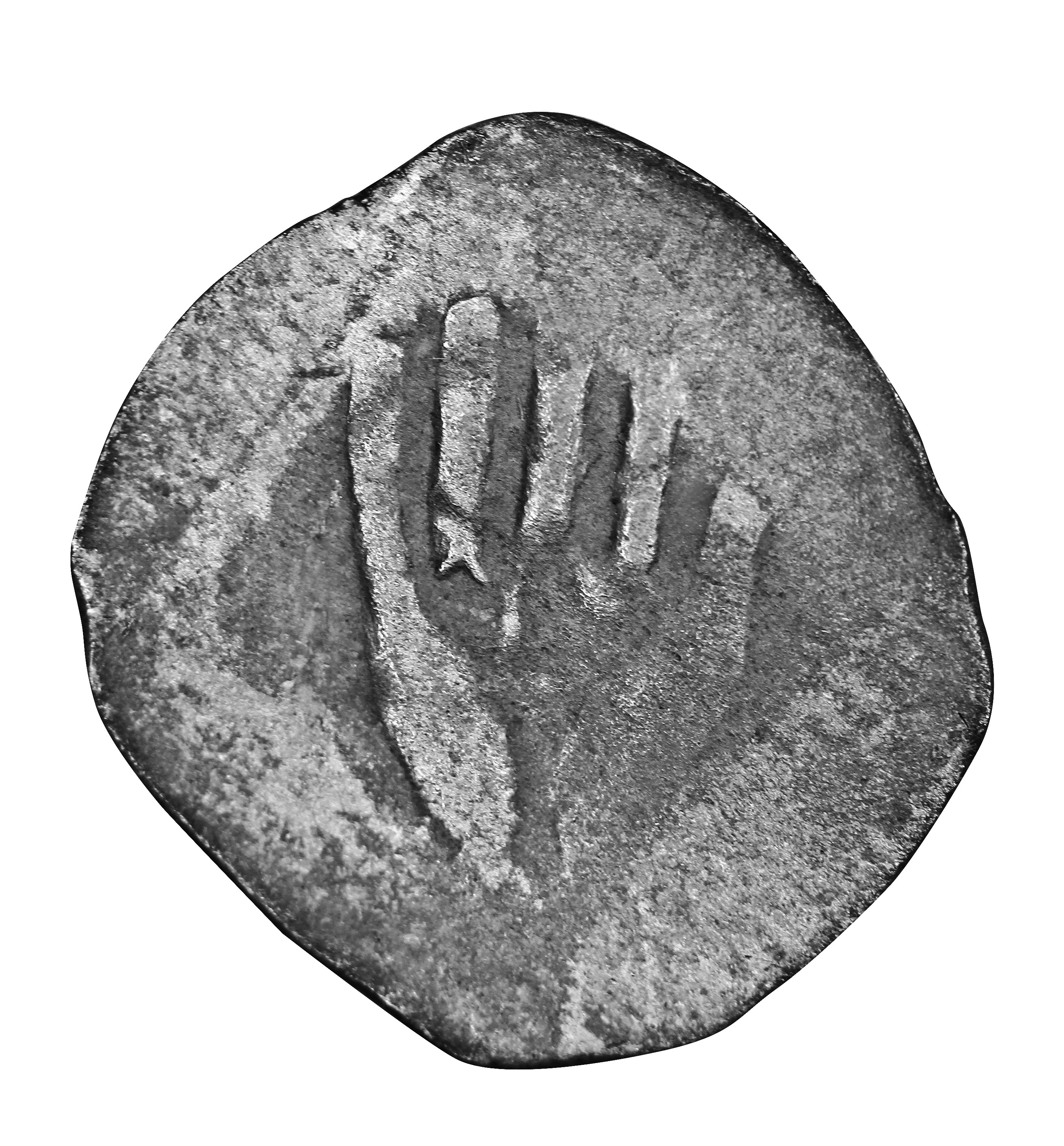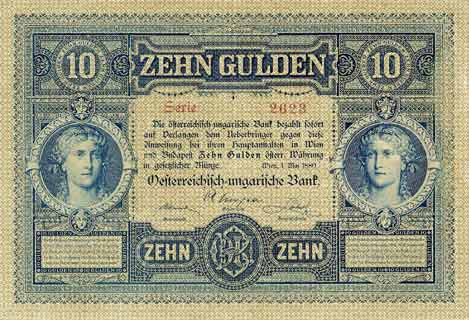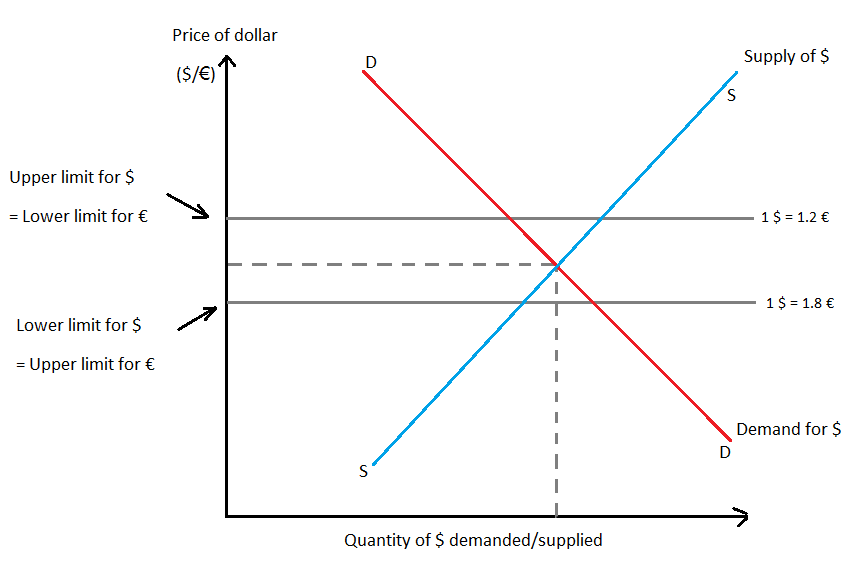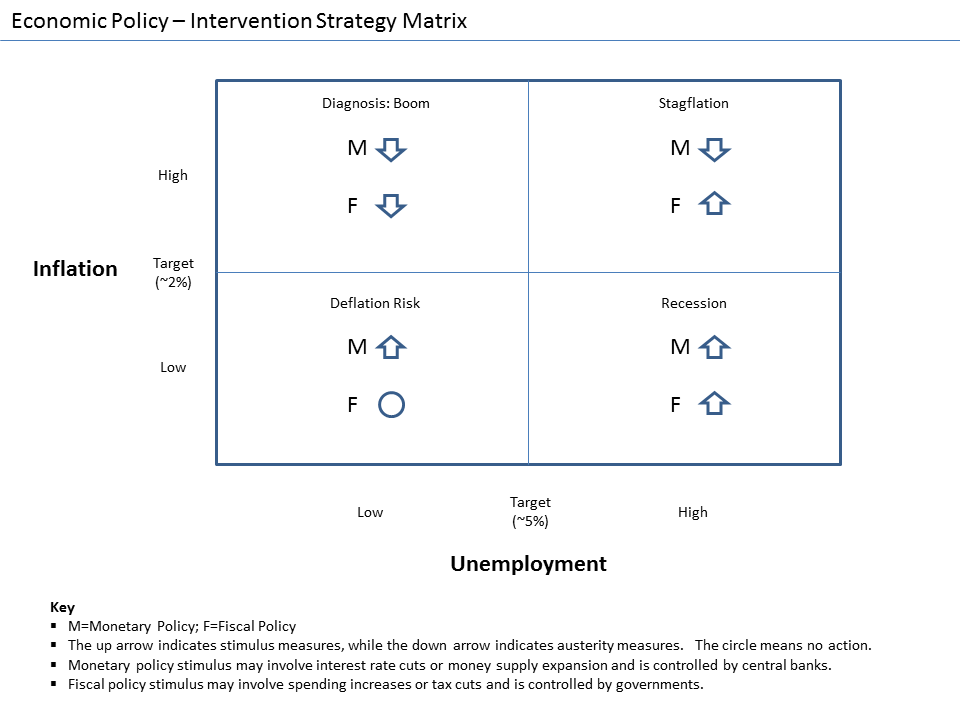|
Czech Koruna
The koruna, or crown, (sign: Kč; code: CZK, cs, koruna česká) has been the currency of the Czech Republic since 1993. The koruna is one of the European Union's 9 currencies, and the Czech Republic is legally bound to adopt the euro currency in the future. The official name in Czech is (plural , though the zero-grade genitive plural form is used on banknotes and coins of value 5 Kč or higher). The ISO 4217 code is CZK and the local acronym is Kč, which is placed after the numeric value (e.g., "50 Kč") or sometimes before it (as is seen on the 10-koruna coin). One crown is made up of 100 '' hellers'' (abbreviated as "h", official name in Czech: singular: , nominative plural: , genitive plural: – used with numbers higher or equal to 5 – e.g. ), but hellers have now been withdrawn from circulation, and the smallest unit of physical currency is 1 Kč. History In 1892, the Austro-Hungarian crown replaced the florin, at the rate of one florin to two crow ... [...More Info...] [...Related Items...] OR: [Wikipedia] [Google] [Baidu] |
Heller (coin)
The ''Heller'', abbreviation ''hlr'', was a coin, originally valued at half a pfennig, that was issued in Switzerland and states of the Holy Roman Empire, surviving in some European countries until the 20th century. It was first recorded in 1200 or 1208 or, according to Reiner Hausherr as early as 1189. The ''hellers'' were gradually so debased that they were no long silver coins. There were 576 ''hellers'' in a ''Reichsthaler'' ("imperial ''thaler''"). After the Second World War, ''hellers'' only survived in Czechoslovakia and Hungary. The ''heller'' also existed as a silver unit of weight equal to of a Mark (weight), ''Mark''. Name The ''Heller'', also called the Haller or Häller (), in Latin sources: ''denarius hallensis'' or ''hallensis denarius'', took its name from the city of Hall am Kocher (today Schwäbisch Hall). Silver coins stamped on both sides (''Häller Pfennige'') were called ''Händelheller'' because they usually depicted a hand. A distinction was made betwe ... [...More Info...] [...Related Items...] OR: [Wikipedia] [Google] [Baidu] |
Austro-Hungarian Florin
The florin (german: Gulden, hu, forint, hr, forinta/florin, cs, zlatý) was the currency of the lands of the House of Habsburg between 1754 and 1892 (known as the Austrian Empire from 1804 to 1867 and the Austro-Hungarian Monarchy after 1867), when it was replaced by the Austro-Hungarian crown as part of the introduction of the gold standard. In Austria, the florin was initially divided into 60 kreutzers (german: Kreuzer, hu, krajcar, hr, krajczár cs, krejcar). The currency was decimalized in 1857, using the same names for the unit and subunit. Name The name ''Gulden'' was used on the pre-1867 Austrian banknotes and on the German language side of the post-1867 banknotes. In southern Germany, the word Gulden was the standard word for a major currency unit. After 1867 Austrian coins used the name ''Florin''. "Florin" is derived from the city of Florence, Italy where the first florins were minted, from 1252 to 1533. History The florin (German: ''Gulden'') first emerged as a ... [...More Info...] [...Related Items...] OR: [Wikipedia] [Google] [Baidu] |
Commemorative Coins Of The Czech Republic
The Czech National Bank issues 200 / 500 Koruna (Kč) silver commemorative coins and golden commemorative coins of various denominations. The golden coins are issued in thematic sets – Bohemian crown set, Charles IV set, Ten centuries of architecture set, Industrial Heritage Sites set and Bridges in the Czech Republic set. In 1999 the special 2000 Kč silver coin with golden inlay and hologram was issued. In 2019, to commemorate the 100th anniversary of Czechoslovak koruna, a heavyweight gold coin weighing 130 kg was issued as well as a commemorative one-hundred crown banknote. Specifications Silver 200 Kc face value coins. (Issued from 1993 to 2010) * diameter: 31 mm, thickness: about 2.3 mm, weight: 13 g * purity: 900/1000 Ag 100/1000 Cu * border proof : imprint "ČESKÁ NÁRODNÍ BANKA * Ag 0.900 * 13 g *" Silver 200 Kc face value coins. (Issued from 2011) * diameter: 31 mm, thickness: about 2.3 mm, weight: 13 g * purity: 925/1000 Ag 75/1000 Cu * ... [...More Info...] [...Related Items...] OR: [Wikipedia] [Google] [Baidu] |
Hamburg
(male), (female) en, Hamburger(s), Hamburgian(s) , timezone1 = Central (CET) , utc_offset1 = +1 , timezone1_DST = Central (CEST) , utc_offset1_DST = +2 , postal_code_type = Postal code(s) , postal_code = 20001–21149, 22001–22769 , area_code_type = Area code(s) , area_code = 040 , registration_plate = , blank_name_sec1 = GRP (nominal) , blank_info_sec1 = €123 billion (2019) , blank1_name_sec1 = GRP per capita , blank1_info_sec1 = €67,000 (2019) , blank1_name_sec2 = HDI (2018) , blank1_info_sec2 = 0.976 · 1st of 16 , iso_code = DE-HH , blank_name_sec2 = NUTS Region , blank_info_sec2 = DE6 , website = , footnotes ... [...More Info...] [...Related Items...] OR: [Wikipedia] [Google] [Baidu] |
Winnipeg
Winnipeg () is the capital and largest city of the province of Manitoba in Canada. It is centred on the confluence of the Red and Assiniboine rivers, near the longitudinal centre of North America. , Winnipeg had a city population of 749,607 and a metropolitan population of 834,678, making it the sixth-largest city, and eighth-largest metropolitan area in Canada. The city is named after the nearby Lake Winnipeg; the name comes from the Western Cree words for "muddy water" - “winipīhk”. The region was a trading centre for Indigenous peoples long before the arrival of Europeans; it is the traditional territory of the Anishinabe (Ojibway), Ininew (Cree), Oji-Cree, Dene, and Dakota, and is the birthplace of the Métis Nation. French traders built the first fort on the site in 1738. A settlement was later founded by the Selkirk settlers of the Red River Colony in 1812, the nucleus of which was incorporated as the City of Winnipeg in 1873. Being far inland, the local cl ... [...More Info...] [...Related Items...] OR: [Wikipedia] [Google] [Baidu] |
Millennium
A millennium (plural millennia or millenniums) is a period of one thousand years, sometimes called a kiloannum (ka), or kiloyear (ky). Normally, the word is used specifically for periods of a thousand years that begin at the starting point (initial reference point) of the calendar in consideration (typically the year "1") and at later years that are whole number multiples of a thousand years after the start point. The term can also refer to an interval of time beginning on any date. Millennia sometimes have religious or theological implications (see millenarianism). The word ''millennium'' derives from the Latin ', thousand, and ', year. Debate over millennium celebrations There was a public debate leading up to the celebrations of the year 2000 as to whether the beginning of that year should be understood as the beginning of the “new” millennium. Historically, there has been debate around the turn of previous decades, centuries, and millennia. The issue arises from the ... [...More Info...] [...Related Items...] OR: [Wikipedia] [Google] [Baidu] |
Euro
The euro ( symbol: €; code: EUR) is the official currency of 19 out of the member states of the European Union (EU). This group of states is known as the eurozone or, officially, the euro area, and includes about 340 million citizens . The euro is divided into 100 cents. The currency is also used officially by the institutions of the European Union, by four European microstates that are not EU members, the British Overseas Territory of Akrotiri and Dhekelia, as well as unilaterally by Montenegro and Kosovo. Outside Europe, a number of special territories of EU members also use the euro as their currency. Additionally, over 200 million people worldwide use currencies pegged to the euro. As of 2013, the euro is the second-largest reserve currency as well as the second-most traded currency in the world after the United States dollar. , with more than €1.3 trillion in circulation, the euro has one of the highest combined values of banknotes and coins in c ... [...More Info...] [...Related Items...] OR: [Wikipedia] [Google] [Baidu] |
Fixed Exchange-rate System
A fixed exchange rate, often called a pegged exchange rate, is a type of exchange rate regime in which a currency's value is fixed or pegged by a monetary authority against the value of another currency, a basket of other currencies, or another measure of value, such as gold. There are benefits and risks to using a fixed exchange rate system. A fixed exchange rate is typically used to stabilize the exchange rate of a currency by directly fixing its value in a predetermined ratio to a different, more stable, or more internationally prevalent currency (or currencies) to which the currency is pegged. In doing so, the exchange rate between the currency and its peg does not change based on market conditions, unlike in a floating (flexible) exchange regime. This makes trade and investments between the two currency areas easier and more predictable and is especially useful for small economies that borrow primarily in foreign currency and in which external trade forms a large part of the ... [...More Info...] [...Related Items...] OR: [Wikipedia] [Google] [Baidu] |
City Index Group
City Index is a global spread betting, FX and CFD Trading provider. City Index is part of the Nasdaq listed StoneX Group and is regulated by the Financial Conduct Authority in the UK, The Australian Services and Investment Commission in Australia and Monetary Authority of Singapore (MAS) in Singapore. The company has offices in the United Kingdom, Australia, Singapore, and Poland. History City Index was founded by Chris Hales and Jonathan Sparke in September 1983 and started trading in March 1984 offering spread betting. In 2001, the company launched its CFD Trading function in the UK. During 2005, City Index acquired the IFX Group, in doing so procuring FX broker IFX Markets and spread betting provider Finspreads.com. The following year, the group opened offices in Sydney, Singapore and Shanghai to serve clients across the Asia Pacific region. In 2008, City Index purchased FX Solutions, a US market leader in retail and white label foreign exchange services. 2009 saw Cit ... [...More Info...] [...Related Items...] OR: [Wikipedia] [Google] [Baidu] |
Stimulus (economics)
In economics, stimulus refers to attempts to use monetary policy or fiscal policy (or stabilization policy in general) to stimulate the economy. Stimulus can also refer to monetary policies such as lowering interest rates and quantitative easing. A stimulus is sometimes colloquially referred to as "priming the pump" or "pump priming". Concept During a recession, production and employment are far below their sustainable potential due to lack of demand. It is hoped that increasing demand will stimulate growth and that any adverse side effects from stimulus will be mild. Fiscal stimulus refers to increasing government consumption or transfers or lowering taxes, increasing the rate of growth of public debt. Supporters of Keynesian economics assume the stimulus will cause sufficient economic growth to fill that gap partially or completely via the multiplier effect. Monetary stimulus refers to lowering interest rates, quantitative easing, or other ways of increasing the amount of ... [...More Info...] [...Related Items...] OR: [Wikipedia] [Google] [Baidu] |
Czech And Slovak Federal Republic
After the Velvet Revolution in late-1989, Czechoslovakia adopted the official short-lived country name Czech and Slovak Federative Republic ( cz, Česká a Slovenská Federativní Republika, sk, Česká a Slovenská Federatívna Republika; ''ČSFR'') during the period from 23 April 1990 until 31 December 1992, after which the country was dissolved into the Czech Republic and the Slovak Republic. Adoption of the name Since 1960, Czechoslovakia's official name had been the Czechoslovak Socialist Republic (''Československá socialistická republika'', ČSSR). In the aftermath of the Velvet Revolution, newly elected President Václav Havel announced that "Socialist" would be dropped from the country's official name. Conventional wisdom suggested that the country would resume the name used from 1919 to 1938 and from 1945 to 1960, Czechoslovak Republic (''Československá republika''). However, Slovak politicians objected that the traditional name subsumed Slovakia's equal s ... [...More Info...] [...Related Items...] OR: [Wikipedia] [Google] [Baidu] |
Czechoslovak Koruna
The Czechoslovak koruna (in Czech and Slovak: ''Koruna československá'', at times ''Koruna česko-slovenská''; ''koruna'' means ''crown'') was the currency of Czechoslovakia from 10 April 1919 to 14 March 1939, and from 1 November 1945 to 7 February 1993. For a brief time in 1939 and again in 1993, it was also the currency in the separate Czech Republic and Slovakia. On 8 February 1993, it was replaced by the Czech koruna and the Slovak koruna, both at par. The (last) ISO 4217 code and the local abbreviations for the koruna were ''CSK'' and ''Kčs''. One koruna equalled 100 ''haléřů'' (Czech, Grammatical number, singular: ''haléř'') or ''halierov'' (Slovak, singular: ''halier''). In both languages, the abbreviation ''h'' was used. The abbreviation was placed behind the numeric value. First koruna A currency called the ''Austro-Hungarian krone, krone'' in German language, German and ''koruna'' in Czech was introduced in Austria-Hungary on 11 September 1892, as the first ... [...More Info...] [...Related Items...] OR: [Wikipedia] [Google] [Baidu] |




.png)


